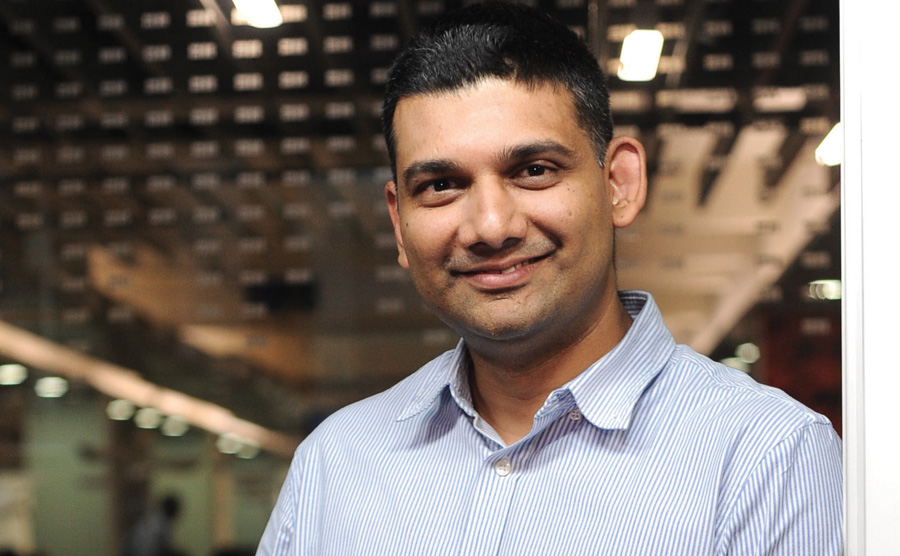Q] Why did you revamp an already popular website like Livemint and will you extend the changes to your other websites too?
We had a fundamental brief, driven by deep consumer research and analytics that ultimately consumption of news on the Internet is going to be driven by personalization. Keeping that in mind, we have incorporated four big changes – one, the ‘Homepage’ would provide personalized news stories to the viewer, only those that interest him, two, the ‘Latest’ section will have all categories of news, aligned time-wise, with the most recent story on top, three, ‘Trending’ will tell you stories that are popular on our platforms and four, ‘My Reads’ would help you track stories that you have read recently. This would pave the way for subscription because a consumer will ultimately pay for content which he wants to come back to and only if he is getting a high quality personalized experience. Websites have never been personalized as far as news is concerned, which is why this launch and experience will be talked about for months. We expect to roll this out across all our platforms over the next few months. After Mint, it would be HT and then the rest of our local language platforms. And it’s going to set the benchmark for how interfaces are created in the news industry.
Q] What kind of response are you getting from advertisers for this new interface?
We believe what’s good for consumers can be good for advertisers as well. One of the things that we have done in this interface is make native ads possible. They are obviously differentiated, yet would feel like a part of the experience. We are moving away from ads that fundamentally block you from scrolling. We found that advertisers love the fact that they can do in-feed ads which are the best in terms of mobile engagement response to ads. Customers love them because we are not going to block them from going to Mint directly. Instead, I am letting them get access to content immediately and while they consume more content and more deeply, there will be some ads that they see as a part of it. In fact, our consumers have told us very clearly ‘I have no problems with HT monetizing the portal as long as you don’t give me ads that slow down my experience’. So, consumers are happy and so are advertisers.
Q] Last year, you mentioned that you would focus on vernacular languages in a big way. How has that panned out?
Yes, vernacular is a big focus and we launched the HT Punjabi website a few weeks back with zero fanfare and zero marketing. Yet, we have become the second biggest in terms of monthly active users in Punjabi and we expect that to accelerate further. Incidentally, HT, our oldest newspaper, was launched in Punjab, so starting our vernacular digital journey from Punjab also made sense. We have plans to launch a website in one more local language in the next few weeks. Within the next two years, we will be available in every major Indian local language.
Q] The year 2018 has been good for HT Digital Streams; you managed to turn around an unprofitable unit of the 100-year-old media company…
We are one of the only two profitable digital media businesses in the country today, the other one being NDTV. When I joined this organization, we were deeply unprofitable like most digital media businesses in the country today. We didn’t really have a real business set-up, our collections were higher than our revenues. In fact, we became profitable in the last six months and are now entering the scale mode. Thus, I would say that we have put HT in a very good place in the past year.
E - PAPER
Advertisment
NEW LIVEMINT IS MAKING CONSUMERS & ADVERTISERS HAPPY
HT Media has recently revamped the Livemint website. Rajiv Bansal, CEO, HT Digital Streams and Chief Digital Officer, HT Media tells us how the publisher has managed to double the engagement for the website on the very first day of launch
 BY
NEETA NAIR
BY
NEETA NAIR
28th January 2019

- TAGS :
- Spotlight
RELATED STORY VIEW MORE
TOP STORY

Who is the right choice, baby?
As the number of celebrity endorsements keep rising, in an ever competitive ad world, the question remains: What creates impact? The celeb or the content?
NEWS LETTER
Subscribe for our news letter
E - PAPER
-

CURRENT 
LAST WEEK
Subscribe To Impact Online
IMPACT SPECIAL ISSUES

demo
Anupriya Acharya Tops the IMPACT 50 Most Influenti
Advertising Turbocharged
A Toast to creativity
GOAing towards tech-lead creativity
REDISCOVERING ONESELF
50 MOST INFLUENTIAL WOMEN LIST 2022
BACK WITH A BANG!
Your Best Coffee Ever
PR Commune Magazine June-July 2022
13th-ANNIVERSARY-SPECIAL
PR Commune Magazine April 2022
VIDEO GALLERY VIEW MORE

Use your existing account to sign in





